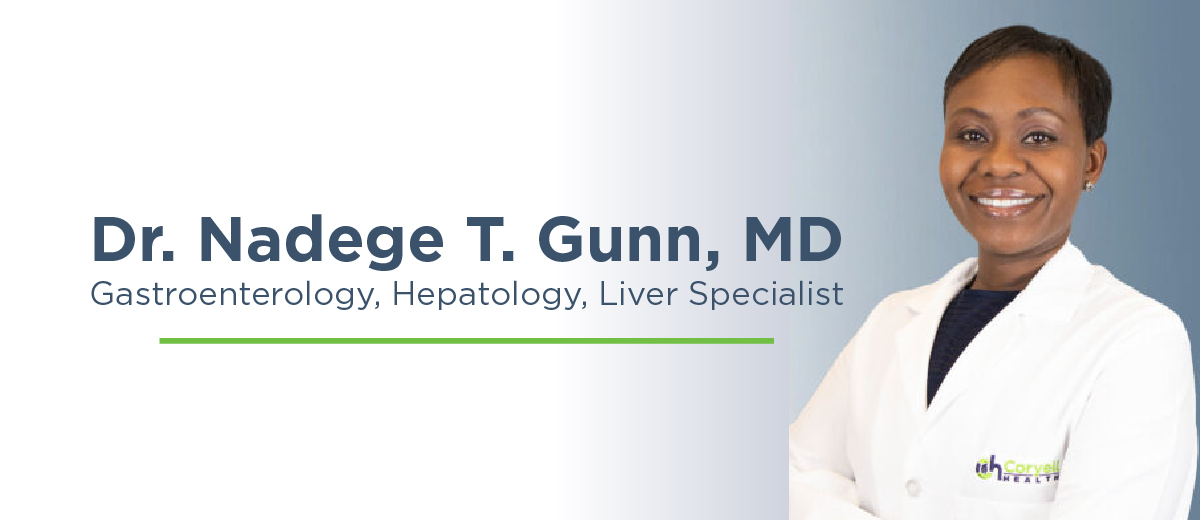Coryell Health is pleased to announce Dr. Timothy Dannemiller has joined our primary care physician practice and is accepting new patients at Coryell Health Medical Clinic- Gatesville. Decades of experience in family and emergency medicine will allow him to also serve as emergency room physician at Coryell Health ER. To make an appointment, call (254) 865-2166. To find out more about Dr. Dannemiller please visit his bio: https://coryellhealth.org/physicians/timothy-dannemiller-md/.
Category: MailChimp Automation
Coryell Health Celebrates Our Practitioners on Doctor’s Day
Every day, physicians at Coryell Health work to improve health, elevate hope, and advance healing – for all. On National Doctors’ Day, we celebrate these dedicated professionals for all that they do to take care of the communities we serve.
Doctor’s Day Luncheon, pictured left to right: Molly Little, APRN, FNP-C; Stephen Norris, MD; Jantzen Matli, DO; Diedra Wuenschel, DO; Jeff Bates, MD; Lesa Rodriguez, FNP-C; Amy Bass, APRN, FNP-C
Express gratitude to the special physicians whose compassion has provided light in a time of need. Let them know what a difference they have made in your life or are making in the lives of others!
Coryell Health Launches New Integrated Electronic Health Record (EHR) Platform
Coryell Health has begun its rollout of the OracleCerner electronic health record (EHR) to drive efficiencies across the healthcare system. Integrating a new EHR will streamline access for healthcare providers and provide the community with a better patient care experience.
“This new technology will help solve ongoing challenges in healthcare by utilizing more reliable, intuitive, and useful tools to reduce complexity and help improve the caregiver and patient experience. This state-of-the-art technology will allow us to continue to offer the community a higher quality of care,” said David Byrom, CEO.
“After more than nine months of planning and training, Coryell Health will launch the first phase of the OracleCerner EHR implementation in the hospital, clinics and outpatient departments on March 28th. The second phase of implementation will include our senior living programs on June 27th.” said Mecca Starkey, Coryell Health Information Administrator and Cerner Implementation Project Manager. “Instead of two separate systems, we will have one integrated EHR platform, providing seamless care of patients and residents within one clinical and financial record. The OracleCerner EHR will improve efficiencies with clinical documentation, medical information, registration, scheduling and billing.
Here’s a breakdown of just a few of the highlights:
– It will improve patient safety by having an integrated system – all patient information in one place.
– Medication reconciliation will be achieved in one system as patients move through service areas.
– Surveillance tools are in place for high-risk protocols, such as sepsis.
– One source for clinical and hospital financial data
My Coryell Patient Portal – a new patient-friendly portal- will able available soon. My Coryell portal will allow patients to securely message providers, request appointments, view and settle financial balances, and access their health history.
“Once the implementation of Oracle Cerner EHR is complete, all of our service lines, including our senior living, will utilize the integrated system,” said Heather Rambeau, Chief Nursing Officer for Coryell Health. “This upgrade will allow for an enhanced continuity of care while improving the patient experience through simpler coordination of treatment, more easily accessible medical records, and a streamlined patient billing process.”
Once the new electronic health record system goes live, clinic and hospital staff will provide registration information to patients for the new My Coryell Patient Portal so they can access pertinent health information. If medical records are needed during this transition, don’t hesitate to get in touch with Coryell Health Information Management at (254) 248-6274.
“Please be patient as we transition to our new OracleCerner EHR,” Starkey adds. “Our goal is to always provide exceptional customer service, and we believe the patient experience at Coryell will improve with the new EHR.”
Recognizing Excellence- Lesa Rodriguez FNP-C, Wound Care Specialist
We are proud to recognize Lesa Rodriguez FNP-C for demonstrating clinical excellence and exceptional healing outcomes.
Lesa Rodriguez is originally from Belton, Texas. She attended Temple College and obtained her Associates in Nursing in 2013. In 2015, she graduated from Texas Tech University with Summa Cum Laude honors. She enjoyed working the Medical Surgical Unit and decided to further her education getting her Masters in Nursing from the University of Texas-Arlington in 2019. Lesa has a particular interest in wound care and helping patients. In her free time she enjoys spending time with her family, camping, spin class, and reading a good book if the time permits.
To refer a patient or schedule an appointment, call: (254) 248-6204.
To learn more about Coryell Health Advanced Wound Center treatment options, including Hyperbaric Oxygen Therapy, visit: coryellhealth.org/wound-center.
Coryell Health Now Offering Updated, Bivalent COVID-19 Booster Vaccine for Patients Ages 12 and Older
The U.S. Food and Drug Administration recently approved — and the Centers for Disease Control and Prevention (CDC) now recommend — that all individuals ages 12 and older receive one updated, “bivalent” booster dose, specifically engineered to fight both the original version of SARS-CoV-2 and the most prevalent Omicron strain of the virus.
The CDC recommends the reformulated Moderna COVID-19 vaccine booster for people ages 18 and older, and the updated Pfizer-BioNTech COVID-19 vaccine booster for individuals ages 12 and older.
The new bivalent booster replaces the former, monovalent booster dose for those 12 and older. Currently, there are no changes to the COVID-19 vaccine schedule for children ages 6 months to 11 years.
Both vaccines have been authorized for administration at least two months after a patient completes primary COVID-19 vaccinations or receives a previous booster.
Coryell County Medical Authority, Dr. Diedra Wuenschel, wants patients to know, as flu season quickly is approaching, patients safely can receive both the flu vaccine and the new COVID-19 booster during the same appointment. “The bivalent boosters are worth getting. They keep people out of hospitals, save lives and combat the pandemic,” said Wuenschel, who is also Coryell Health Medical Clinic Director and Chief of Staff. “Luckily, a major new variant hasn’t arisen, but the virus is still evolving. Reigning in the virus with new boosters every few months is not a long-term strategy, but it is all we have now, until a next-generation vaccine is developed that can fight all or most variants and provide long-lasting protection.”
This may be the last free shot; it is the final one Congress has funded. Wuenschel strongly recommends taking advantage of this opportunity.
Find Out When You Can Get Your Booster
Coryell Health Medical Clinic- Gatesville, Bldg. 2, is providing the Bivalent vaccine for walk-in and appointment scheduled patients. Monday- Friday, 8:30am-11:30am – 1:30pm- 4:30pm. Doses for 5-11 year-olds are in route. Follow Coryell Health’s Facebook page for the latest COVID-19 updates.
For more information about the recent booster, visit https://www.cdc.gov/coronavirus/2019-ncov/vaccines/stay-up-to-date.html and/or https://dshs.texas.gov/covidvaccine/.
Getting a flu shot protects you, your family, and your community.
The fall 2022 flu season may hit early and hard this year, so it’s best to get your flu vaccine as soon as possible.
Dr. Diedra Wuenschel, Coryell Health Medical Clinic Director and Coryell County Health Authority, is urging people to get their flu vaccines relatively early this fall.
“Every year, we try to guess when the flu is going to hit and when we should get our vaccines. Some people wait to get their flu shot until right before Thanksgiving in case they’ll be traveling over the holidays,” said Wuenschel.
Her advice: “Don’t wait. Get your flu shot as soon as it’s available.”
Learn more about the newest COVID-19 booster shots
Patients can receive their COVID-19 booster during the same visit as flu vaccine- in the opposite arm.
Wuenschel reminds people that it takes about two weeks after you get your flu shot for the vaccine to fully go into effect.
Getting your flu shot relatively early this year — in September or October — is the best way to brace yourself for what could be an early, virulent flu season.
“The flu vaccine will protect you for four to six months. If you’re a little off on your timing, that’s fine. It’s best to be early this year. If you get your shot too late, it just means you’re more at risk of getting the flu,” adds Wuenschel.
Coryell Health Medical Clinic- Gatesville, Goldthwaite, Moody, Waco and Temple are providing flu shots for walk-in patients. Monday- Friday, 8:30am-11:30am – 1:30pm- 4:30pm.
Coryell accepts most major insurance. Health plans usually cover a set of preventive services like shots and screening tests at no cost to the patient. Uninsured self-pay $35.
Coryell Health Advanced Wound Center Wins Two Awards
Coryell’s Advanced Wound Center won both the Clinical Distinction Award and the Excellence in Patient Satisfaction Award from RestorixHealth! These awards mean that our Advanced Wound Center demonstrates exceptional success in clinical and safety benchmarks, and our patient success rate is at least 96%. We are proud of these achievements and are grateful for our hardworking team behind it all. Want more information about our Advanced Wound Center and the technology behind the healing? Visit our website: https://coryellhealth.org/wound-center.
The Need for Sepsis Awareness: A Survivor’s Perspective- A Decade Later
In December 2011, a lack of awareness of sepsis – a disease responsible for more American deaths each year than breast cancer, prostate cancer, and AIDS combined – nearly cost me my life.
It all began with a little bump on my shoulder one afternoon. When it all began, I did not know that within 24 hours, that small bump would develop into life-threatening septic shock and soon I would find myself in the ICU.
The seemingly insignificant little bump became swollen and I developed symptoms that felt like the worst flu of my life. When my husband had discovered my temperature was over 104 degrees, he had rushed me to the emergency room, just on a hunch that this was not an ordinary “flu.”
He had never heard of sepsis, and I had heard the word, but thought it was a rare, largely obsolete disease. I had no idea of the symptoms and certainly no idea it could be happening to me.
When I arrived at the hospital, I was the sickest I had ever been in my life. My temperature was soaring, my blood pressure was falling, and my arm was in excruciating pain. I soon learned the bump on my arm actually was a skin infection, which had led to cellulitis.
The doctors acted quickly and I was soon admitted to the ICU, where I vacillated between life and death. I was cognizant enough to worry whether I would make it out of the hospital and home again to my two small children, and if so, whether all my limbs would be coming home with me.
After several terrifying, agonizing days, I began to recover, transitioning first out of the ICU and then out of the hospital. I went home to begin what would be a deceptively arduous recovery. Having survived and avoided severe complications like amputations, I expected my recovery would be swift, but it was not. Weeks turned to months, even years, before I began to feel like “myself” again. I did not know then that post-sepsis or post-ICU syndrome exists, and can affect many sepsis and ICU patients. Today, I have my strength back, although some of the physical and of course the emotional impacts still linger.
As difficult as my recovery was, I am lucky to be alive. I am lucky that the doctors and nurses at my hospital were aware of sepsis. They saved my life. Others – who either do not make the fortunate decision to seek emergency medical care, or whose symptoms are overlooked or misdiagnosed – are not as lucky.
But surviving sepsis should not be a matter of luck. The public and medical professionals alike must be aware of sepsis. We must know the name of this deadly disease, and we must know the symptoms. By being aware and suspecting sepsis, we will be able to save more lives — which just might be our own, or those of our loved ones. The CDC’s efforts to increase sepsis awareness and improve treatment will result in fewer lives lost to this sudden, swift and often-fatal disease.
Download and share any of CDC’s FREE patient education materials with your friends and loved ones to learn how to prevent infections, be alert to the signs and symptoms of sepsis, and act fast if sepsis is suspected.
Guest Author: Dana Mirman
Dana Mirman is a communications professional. She is a member of the Sepsis Alliance Board of Directors.
Posted on by
RehabLiving Hosts “Living with Dementia” Workshop During Alzheimer’s Awareness Month
September is almost over, but our memory of Tam Cummings “Living with Dementia” workshop earlier this month lives on. RehabLiving hosted the event this September, during World Alzheimer’s awareness month. Alzheimer’s is the most common form of dementia, a general term for memory loss and other cognitive abilities serious enough to interfere with daily life. Passionate about teaching others what dementia is, Dr. Tam clearly explained dementia and how it progresses in the brain. A master at translating medical jargon into easy to understand terms, Dr. Tam walked the audience of medical staff and care givers through how the disease starts, how it presents itself in each stage of dementia and how to provide care for a loved one or resident, even when their behaviors may be challenging.
Dr. Tam’s book, Untangling Alzheimer’s, is designed to allow the first time caregiver and the longtime professional to gain the understanding and skills they will need to work effectively with persons with dementia. To learn more about Dr. Cummings and her work, visit https://tamcummings.com/.
Coryell Health Hosts Ribbon Cutting for Primary Care Clinic in Waco
Coryell Health hosted a ribbon cutting at the Medical Clinic- Waco location performed by the Greater Waco Chamber of Commerce on August 16, 2022. The new clinic location is on 5100 Franklin Avenue, Waco, TX.
To serve the McLennan County community and greater Central Texas area, the Coryell Health Medical Clinic- Waco opened several years’ prior, providing specialty care, and adding the full scope of primary care services on April 11, 2022. Local community members, Greater Waco Chamber members, media, and Coryell Health board members and staff attended the ribbon cutting celebration.
“This ribbon cutting is another milestone for the Greater Central Texas community and Coryell Health,” said David Byrom, Coryell Health CEO. “We are proud to extend the reach of our innovative care model to Waco and are dedicated to improving health outcomes of the patients in the communities we now serve.”
“Our family medicine team is available five days a week, providing comprehensive and preventive primary care and urgent care services including welcoming walk-ins, same-day appointments and scheduled appointments,” said Dr. Jantzen Matli, Family Medicine, Coryell Health Medical Director- Waco.
“The Coryell Health Medical Clinic- Waco also provides specialty care services including: bariatric medicine, dermatology, hepatology, orthopedics, and general surgery. We have been gaining the trust of patients in Waco, offering them exceptional care where they can get in quickly and feel at home. We are grateful to the team at Coryell whose collaboration and efforts have contributed to this achievement,” Matli adds.
URGENT CARE/ WALK-INS WELCOME | SAME DAY | NEXT DAY APPOINTMENTS | TELEHEALTH
Accepting Most Major Insurance Including: Medicare | Medicaid | Tricare | BSW Health Plan | BCBS
To learn more about Coryell Health services, please call (254) 865-2166 or visit coryellhealth.org.
Gastroenterology vs. Hepatology: What’s the Difference?
Medical terminology can be confusing and hard to understand. At Coryell, we want to make sure that our patients are well-informed and able to make the best decisions possible for their health.
Today, we’re going to break down the difference between Gastroenterology and Hepatology. While those words sound very different, they’re actually more similar than you’d think! Hepatology is a subspecialty of Gastroenterology, meaning that often, physicians practice both.
Gastroenterology is a branch of medicine focused on the digestive system and its disorders. It encompasses the diseases that affect the organs along your gastrointestinal tract, including the liver, stomach, intestines, pancreas and gallbladder. Gastroenterologists are able to diagnose and treat digestive disorders such as liver disease, ulcers, irritable bowel syndrome and some cancers.
There are a few signs that you should seek help and make an appointment with a gastroenterologist, including:
- Unexplained changes in your bowel habits, such as diarrhea, constipation and blood in stool
- Unusual bloating
- Frequent and severe heartburn
- Sudden and severe abdominal pain
- You’re due for a colonoscopy
If you’re having any of those symptoms, a gastroenterologist may be able to help you by performing an exam and potentially diagnosing one of the following:
- Gastroesophageal reflux disease (GERD)
- Hemorrhoids
- Inflammatory bowel disease (IBD), which includes Crohn’s disease and ulcerative colitis
- Irritable bowel syndrome (IBS)
- Pancreatitis
- Ulcers
- Autoimmune and genetic liver disorders

Hepatology is more specifically focused on the liver, gallbladder, biliary tree and pancreas. There are a few specific reasons you may be referred to a hepatologist, including:
- Liver injury caused by medication
- Gastrointestinal bleeding from portal hypertension
- Jaundice
- Ascites
- Enzyme defects
- Blood tests that indicate liver disease
A hepatologist will be able to diagnose disorders including:
- Hepatitis infections
- Fatty liver disease, alcohol-related and not
- Jaundice
- Cirrhosis
- Metabolic liver diseases
- Liver cancer
Coryell offers a full service esophagogastroduodenoscopy (EGD) program, which involves a test that examines the lining of the esophagus, stomach and first part of the small intestine. We also have a colonoscopy program, as well as a minimally invasive surgery program with two surgeons focused on esophageal, gastric, intestinal and bariatric surgery.
Dr. Nadege Gunn is Coryell’s new Hepatologist who specializes in treating patients with chronic liver disease. She is also a Medical Advisory Member for the American Liver Foundation and the Fatty Liver Foundation. Call (254) 865-2166 to schedule an appointment with Dr. Gunn today.
Get Ahead of the Game – Schedule Your Child’s Sports Physical
The 5 Ws of Sports Physicals
The deadline for school sports physicals will be here before you know it – consider scheduling your child’s sports physical now! Coryell Health always has your family covered with physicals close to home.





To schedule a physical, please call Coryell Health Medical Clinic at (254) 865-2166. Bring identification, such as a driver’s license, and current copy of the insurance card that covers your child, and a list of medications the child is taking. If your child has been seen anywhere else since your last visit, such as urgent care or the emergency department, please bring paperwork or test results. To expedite your visit, download the Child Sports Physical form to complete and bring to your child’s appointment.
 Skip to content
Skip to content
